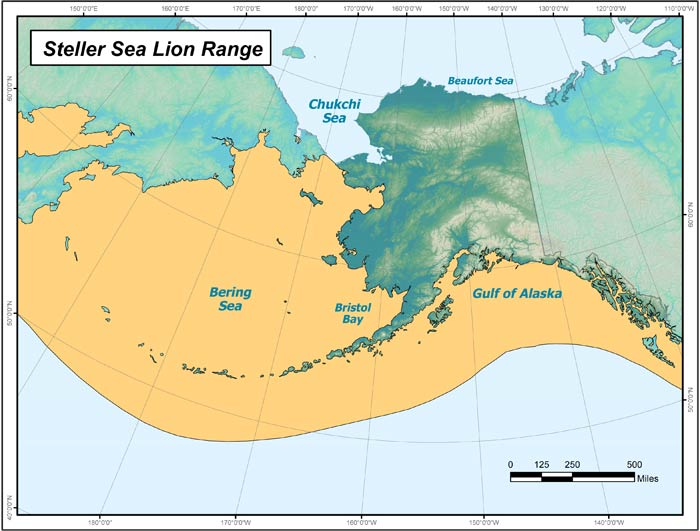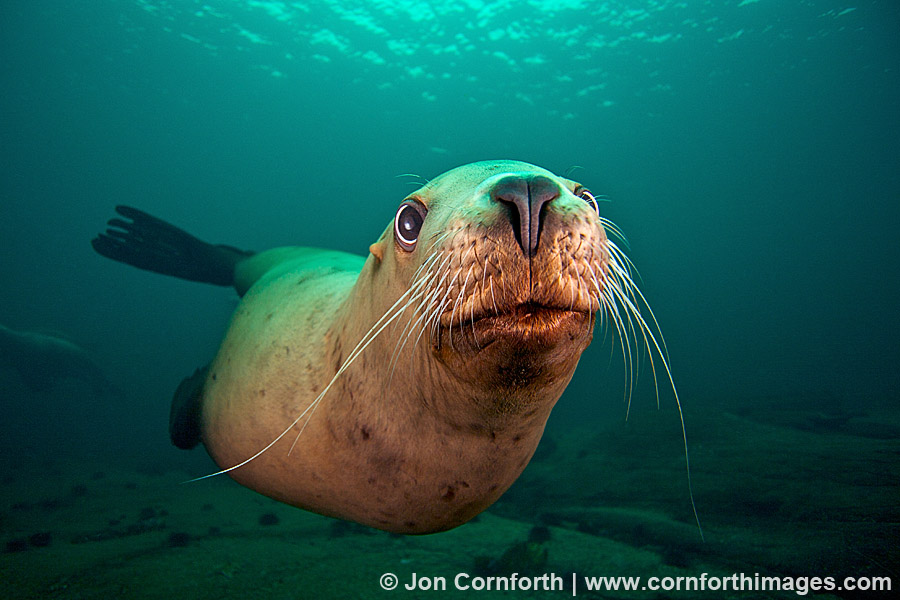Blog by: Jake McEwen
Species: Steller Sea Lion (Eumetopias jubatus)

Description of Species:
The Steller Sea Lion, also known as the Northern Sea Lion, can be found in the much colder and sub-arctic temperatures of the Northern Pacific Ocean along the coastlines of such places as the Bering and Okhotsk Sea and can even be found south of California. This species of Sea Lion is the biggest member o the Otariid family which are eared seals. Males can weigh up to 2,500 pounds while females can reach up to 700 pounds; this extreme weight difference is due to the fact that this species exhibits sexual dimorphism meaning that the males are excessively larger than females. Along with their size, males can be distinguished from females by their thick mane of coarse hair. The Steller Seal Lion can be found feeding near shore and pelagic waters. According to the Office of Protected Resources, "Steller sea lions are opportunistic predators, foraging and feeding primarily at night on a wide variety of fishes (e.g., capelin, cod, herring, mackerel, pollock, rockfish, salmon, sand lance, etc.), bivalves, cephalopods (e.g., squid and octopus) and gastropods." These Sea Lions utilize land habitats (shores) to rest, molt, mate, and raise their offspring. This species does not migrate, but will travel great distances following their prey.
Threats to the Steller sea lions (according to the Office of Protected Resources):
- Boat/Ship strikes
- Pollutants
- Habitat degradation
- Illegal hunting
- Offshore oil and gas exploration
- Killing and placing bounties on this species, which fishermen blamed for stealing fish from them (in the early 1900s)- Killing to limit their predation on fish in aquaculture facilities (fish farms), but intentional killing of Steller sea lions has not been permitted since they were protected under the Marine Mammal Protection Act (MMPA) and listed under the ESA (not since 1972).
Population changes and reasons for Listings:
The Steller Sea Lion Population has been split into two distinct districts, an Eastern U.S. district and a Western U.S. district. In the Western U.S. there are approximately 39,000 to 45,000 sea lions while the Eastern U.S. holds approximately 44,500 to 48,000 sea lions. Before their decline it was estimated that there were 240,000 to 300,000 seals within the full scope of their range. Between 1976 and 1990 the Western district fell by 75% and then between 1991 and 2000 that reduced population declined another 40%. The decline eventually reached a total of 80% of the original population within the U.S. which was dramatic enough to cause the National Oceanic and Atmospheric Administration to declare the species threatened range-wide under the Endangered Species Act in April 1990. After their listing, the species declined at a rate of 5% each year which is lower compared to the 15% experienced each year during the 1980s. The two districts actually came to be in 1997 when the NMFS decided that the East and West populations were experiencing different fluctuations. According to the Recovery Plan for the Steller Sea Lion, "The western DPS, extending from Japan around
the Pacific rim to Cape Suckling in Alaska (144°W), was up-listed to endangered due to its
continuous decline and lack of recovery. The eastern DPS, extending from Cape Suckling east to
British Columbia and south to California, remained on the list as threatened because of concern
over western DPS animals ranging into the east, human interactions, and the lack of recovery in
California."
Where are we at now?
Currently the Eastern Disctinct Population Segment has been delisted while the Western Distinct Population Segment is listed as endangered.
Description of Recovery Plan:
In 1992, two years after being listed, a recovery plan was created for the seals, and in 2008 an updated and revised recovery plan was issued. The current recovery plan mainly features critical habitat designations and catch/harvest limits concerning the Steller seal lions. A 20 nautical mile buffer that surrounds major beaches and feeding grounds that Stellers use has been implemented. These buffer zones include designated no-entry zones around breeding grounds. According to the plan the NMFS has "implemented a complex suite of fishery management measures designed to minimize competition between fishing and the endangered population of Steller sea lions in critical habitat areas."



No comments:
Post a Comment